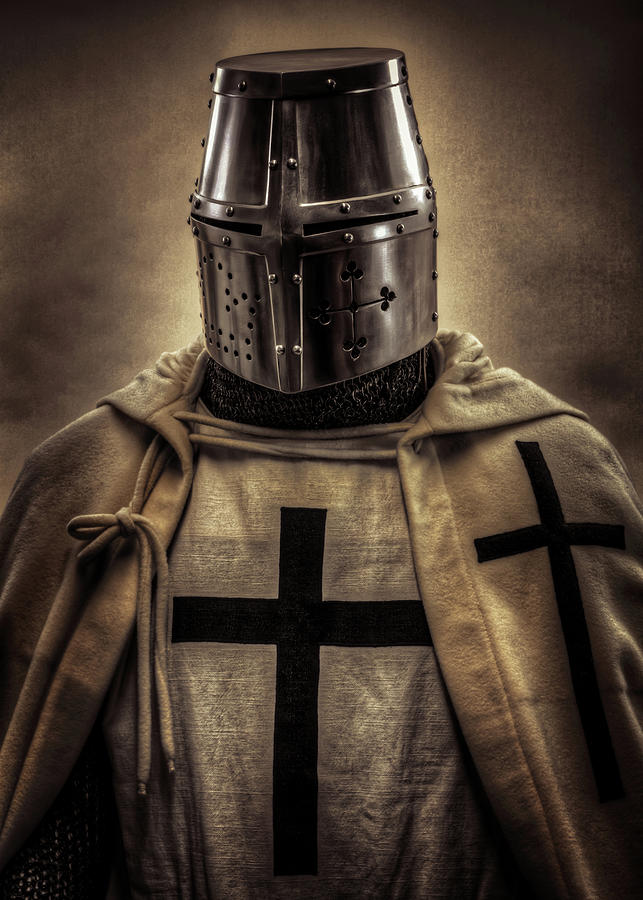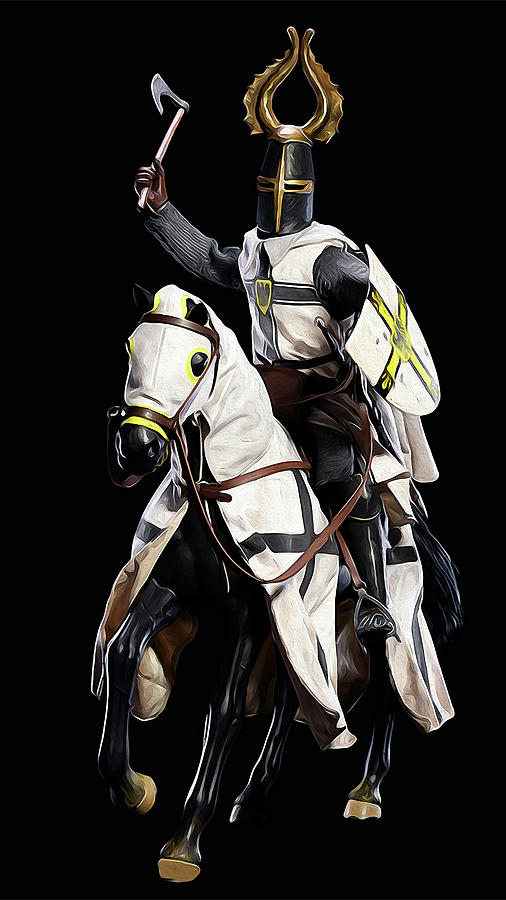Teutonic Knight by DLDigital on DeviantArt

Teutonic Knight by Aeluruss on DeviantArt
The Teutonic Order in Prussia and Livonia: The Political and Ecclesiastical Structures, 13th-16th Centuries. Toruń: Scientific Society in Toruń, 2015. Toruń: Scientific Society in Toruń, 2015. This is a superb handbook in English that covers the history of the Ordensland from leading experts in the field.

Teutonic Knight Photograph by Hans Zimmer Fine Art America
The State of the Teutonic Order ( Latin: Civitas Ordinis Theutonici) [a] was a theocratic state, located along the southeastern shore of the Baltic Sea in northern Europe. It was formed by the knights of the Teutonic Order during the early 13th century Northern Crusades in the region of Prussia.

Cover for the Joan of Arc, Teutonic knights expansion by Mythic Games Crusader knight, Knight
Hand Pavise with the Coat of Arms of the Teutonic Order Place Germany (Object made in) Date Dates are not always precisely known, but the Art Institute strives to present this information as consistently and legibly as possible. Dates may be represented as a range that spans decades, centuries, dynasties, or periods and may include qualifiers.

Teutonic Knight 06 Painting by AM FineArtPrints Pixels
The Order of Brothers of the German House Saint Mary in Jerusalem (Official names: Template:Lang-la, Template:Lang-de), or for short the Teutonic Order (Today: German Order), is a German Roman Catholic religious order.It was formed to aid Catholics on their pilgrimages to the Holy Land and to establish hospitals to care for the sick and injured. Its members have commonly been known as the.

Teutonic Knight by JLazarusEB on DeviantArt Medieval Ages, Medieval Knight, Medieval Armor
First stop is the 14th century Gothic church, remodeled in the early 18th century in the Baroque style. There's a fine triptych from Flanders made in 1520 and the walls are covered with the coats of arms of various men who have joined the Order, which is formally called The Order of The Teutonic Knights of St. Mary's Hospital in Jerusalem.

Knights of the Teutonic order during the existence of the State of the Teutonic Order are often
The Order of Brothers of the German House of Saint Mary in Jerusalem (commonly known as the Teutonic Order) is a military order that was founded in the Holy Land during the Crusades. The Teutonic Order was originally established as a hospice to provide care from pilgrims.

Teutonic Knight by SpitFireMarkA1 on DeviantArt
The Teutonic Order has a centuries-long history that gives the German Army today much to draw from. "Cross and sword, bloody battles and charity, submission and mission: This is the image of the Teutonic Order in the Middle Ages," noz.de noted. "It was the first German and, after the Knights of St. John and the Knights Templar, the third.

Teutonic knights Тамплиеры, Средневековье, Рыцарь
Instead, the war against the pagans took priority. The Teutonic Order brought new forms of military technology, (like castle construction) German settlers, and a distinct form of crusading ideology that served to transform the pagan landscape in Prussia to a place of holy war and pilgrimage.. [The Art of the Teutonic Order in Prussia and.

тевтонский орден Medieval armor, Medieval knight, Knight
The grand master of the Teutonic Order (German: Hochmeister des Deutschen Ordens; Latin: Magister generalis Ordo Teutonicus) is the supreme head of the Teutonic Order.It is equivalent to the grand master of other military orders and the superior general in non-military Roman Catholic religious orders. Hochmeister, literally "high master", is only used in reference to the Teutonic Order, as.

Grandmaster of the Teutonic Order in the Marienburg Fortress Medieval knight, Crusader knight
A medieval Teutonic Knight was a member of the Catholic military Deutscher Orden or Teutonic Order, officially founded in March 1198 CE. The first mission of the Teutonic knights was to help retake Jerusalem from the Arabs in the Third Crusade (1187-1192 CE), and during this failed attempt they set up a hospital outside Acre during the siege of that city.

Knights Of The Teutonic Order [1960] freewaremasters
The Grand Master (German: Hochmeister; Latin: Magister generalis) is the holder of the supreme office of the Teutonic Order. It is equivalent to the grand master of other military orders and the superior general in non-military Roman Catholic religious orders. Hochmeister, literally "high master", is only used in reference to the Teutonic Order, as Großmeister ("grand master") is used in.

State of the Teutonic Order by TiltschMaster on DeviantArt
This German order lost the war to Lithuanians. Unfortunately, in 1291, their headquarters in Acre fell. Then, they moved to Venice. The 14th century was the most powerful period of the Teutonic Order. From 1326 to 1333, the Teutonic Order invaded Poland, and Poles had to surrender. The decline

ArtStation Teutonic Knight for Joan of Arc by Mythic Games, Catalin Lartist Medieval fantasy
Teutonic Order, or Teutonic Knights officially House of the Hospitallers of Saint Mary of the Teutons, Religious order important in eastern Europe in the late Middle Ages. Founded in 1189-90 to nurse the sick in Palestine during the Third Crusade, it was militarized in 1198 and given land in Jerusalem and Germany.

Teutonic Knight by JLazarusEB Medieval knight, Crusader knight, Knight
The battle was a political one (about territorial expansion and control) between the Teutonic Knights that gained power during the Holy Crusades and has subsequently settled in the Mazovia region.

Teutonic Knight 04 Painting by AM FineArtPrints Fine Art America
The Order of the Teutonic Knights (known officially as The Order of the German House of St Mary in Jerusalem) is a charitable institution that remains active today. As indicated by its full name.

Knights of the Teutonic Order by Marek Szyszko Medieval Knight, Medieval Armor, Medieval Fantasy
The Teutonic Order is a Catholic religious institution founded as a military society c. 1190 in Acre, Kingdom of Jerusalem. The Order of Brothers of the German House of Saint Mary in Jerusalem was formed to aid Christians on their pilgrimages to the Holy Land and to establish hospitals.